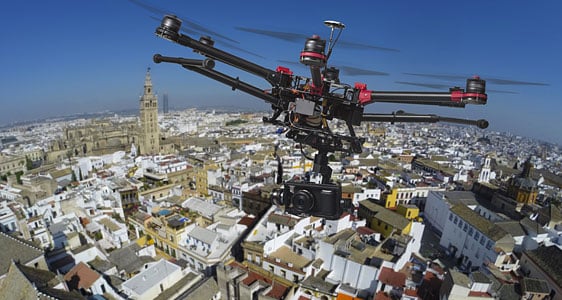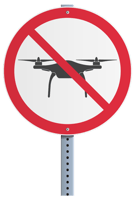
The security benefits of drones are becoming more apparent as hobby and commercial UAVs mounted with cameras provide surveillance views that were previously not possible. But just like any emerging technology, drones, or unmanned aerial vehicles (UAVs), can also be used for not-so-innocent purposes. There have been several instances across the country of drones managing to drop contraband such as drugs and weapons into prison yards, causing inmates to fight. Fortunately, modified radar detection technologies make it easier for businesses and governments to detect UAVs so safety management teams can quickly react in cases of potential danger.
Over the past few years, the availability and popularity of “hobby drones” has skyrocketed. While the majority of these smaller UAVs are seen as harmless toys, there have been a growing amount of more sophisticated technology that is commercially available to those who are willing to seriously invest in their hobby. Because of the explosion in popularity, in February 2015 the Federal Aviation Administration established a comprehensive list of regulations for unmanned aerial systems to abide by, such as not operating within no-fly zones (within 5 miles of an airport) in order to mitigate potential collisions between a passenger jet and a recreational UAV, which would result in devastation.
While most of the FAA’s regulations exist solely to deter unintentional risk to public safety through accidental collisions and crashes, the fact stands that if there is someone who wishes to intentionally cause mayhem or potential damage to critical infrastructure, such as public utilities, oil and gas lines, and government buildings, it can be done with anyone with a basic understanding of technology and a few hundred dollars. Some of the ways UAVs can intentionally and unintentionally be a threat to public safety:
- In May 2015, an individual was seen flying a UAV approximately 10 feet in the air in Lafayette Park, across the street from the north side of the White House, causing Secret Service officers to take him into custody.
- In Tokyo, a UAV with traces of radioactive material landed on the Prime Minister’s roof, leading to the arrest of a man by Japanese police.
- Some UAVs are interfering with firefighting operations that airlift and drop water and flame retardant on wildfires by flying in the same airspace at an attempt to shoot video footage of the fires.
- There have been multiple attempts of using drones to take pictures and/or video of high profile individuals and celebrities, causing invasions of privacy.
- In late October, a drone flew into power lines in West Hollywood, CA and knocked one of the wires to the ground, cutting off power to hundreds of residents in the area.
In the past, there was little that could be done to detect and prevent drones/UAVs from threatening the safety of commercial facilities, governments, and large scale venues. Not only can drones be misused for terrorist attacks to directly cause harm, but non-military drones outfitted with the right equipment can instead harm a business’s reputation by performing data espionage and sabotage, sneaking high definition pictures of documents or interfering with radio and telecommunication signals to smuggle sensitive information out of factories or offices.
Drone detection is quickly becoming a critical aspect of a comprehensive security plan to protect people and property from terrorists, vandals, protestors, or disruptors. Various levels of emerging drone detection technology can help actively monitor and secure businesses, critical infrastructure, and venues that host public events:
- Audio technologies and standard microphones are able to detect the specific sound signatures that the majority of UAVs emit. Sound detection devices are relatively cost effective to implement, but they can only detect a drone at an average of 50 to 100 feet away and typically tend to fail in urban environments where ambient noise levels are higher.
- Video detection can be more useful than audio detection as cameras have a range of sight of about 350 feet, but many video detection systems have a difficult time distinguishing birds from drones. Some applications of thermal cameras can be effective, but only with non-recreational drones as they tend to produce more heat.
- Radio frequency detection requires more technical knowledge, but if set up effectively, it can detect drones to about 1400 and is extremely difficult to successfully circumvent.
- Compact surveillance radar devices to detect medium-sized UAVs at up to a 1600 feet range. The detection system uses intelligent radar techniques by comparing a potential UAV with malicious intent to a bank of thousands of pre-trained samples of common UAV types and continuously capturing forensics data for future analysis.
Drones can become a serious security issue when they are small, quiet, and able to zip through heavily populated areas, so detection may require a combination of sensors and detection methods to keep in pace with the evolution of drone technology, unforeseen threats, and the environmental changes. Ideally, a sophisticated drone detection solution should offer total integration with the organization’s current security systems, especially emergency alert systems and video management systems.
